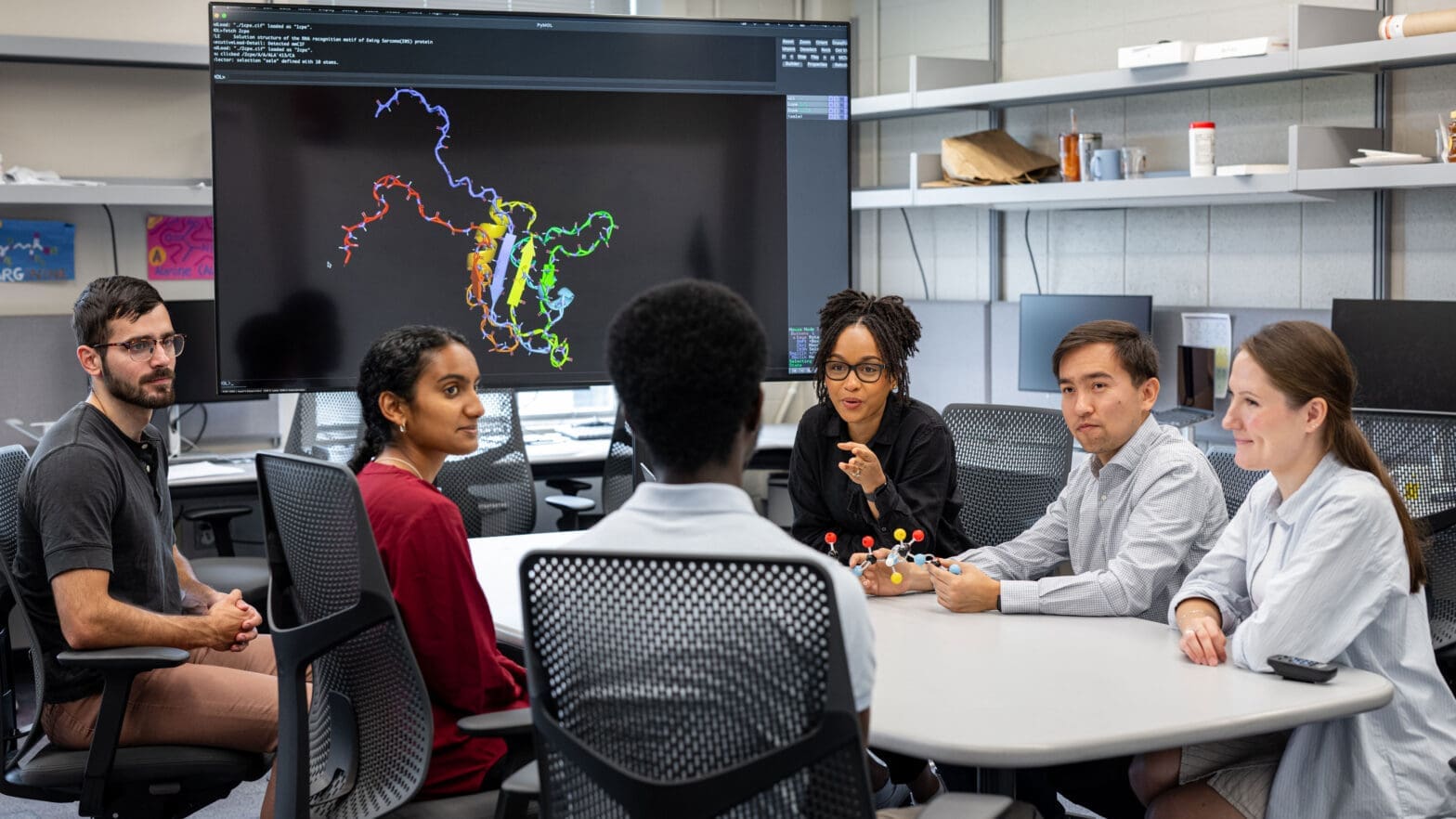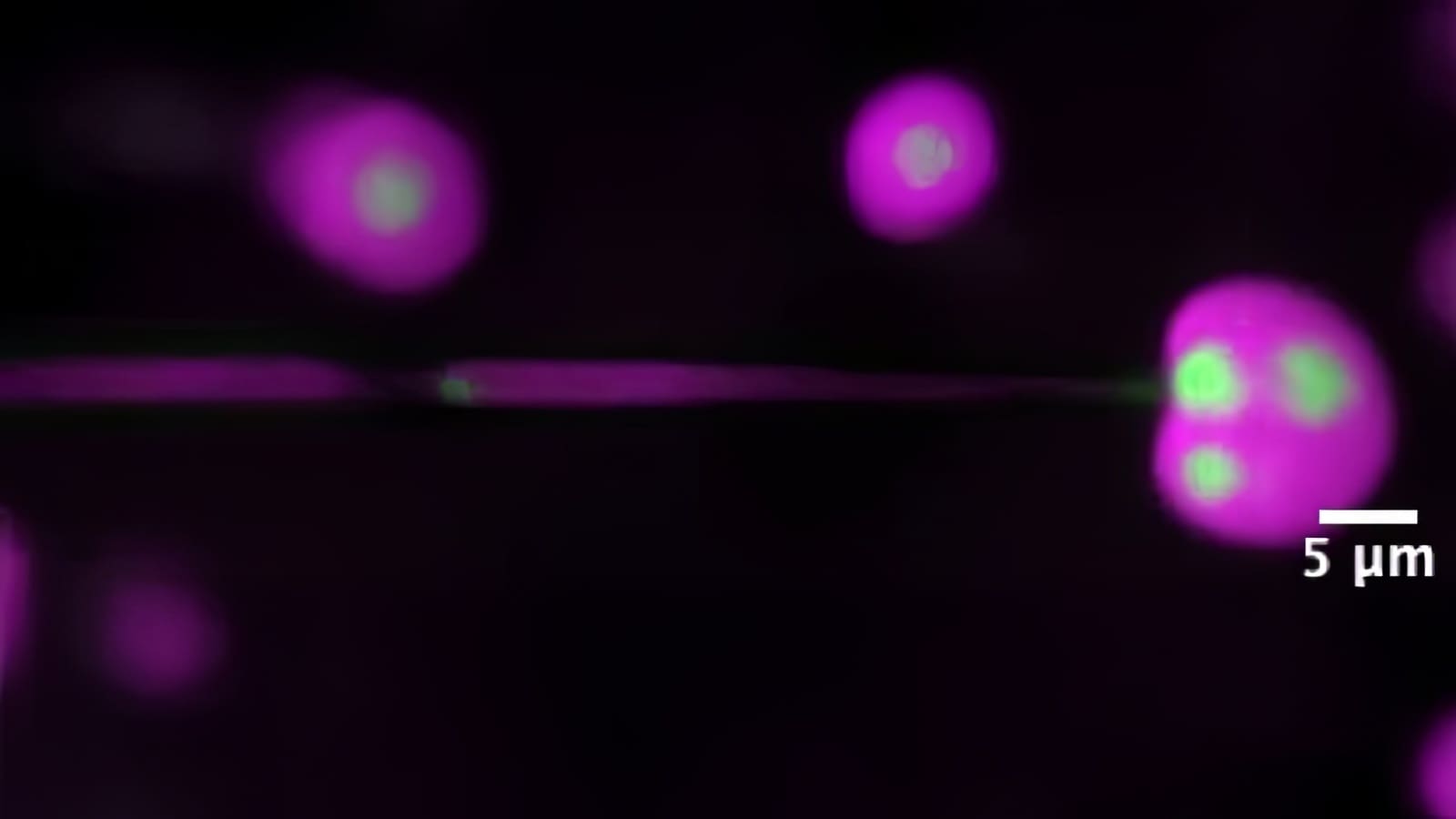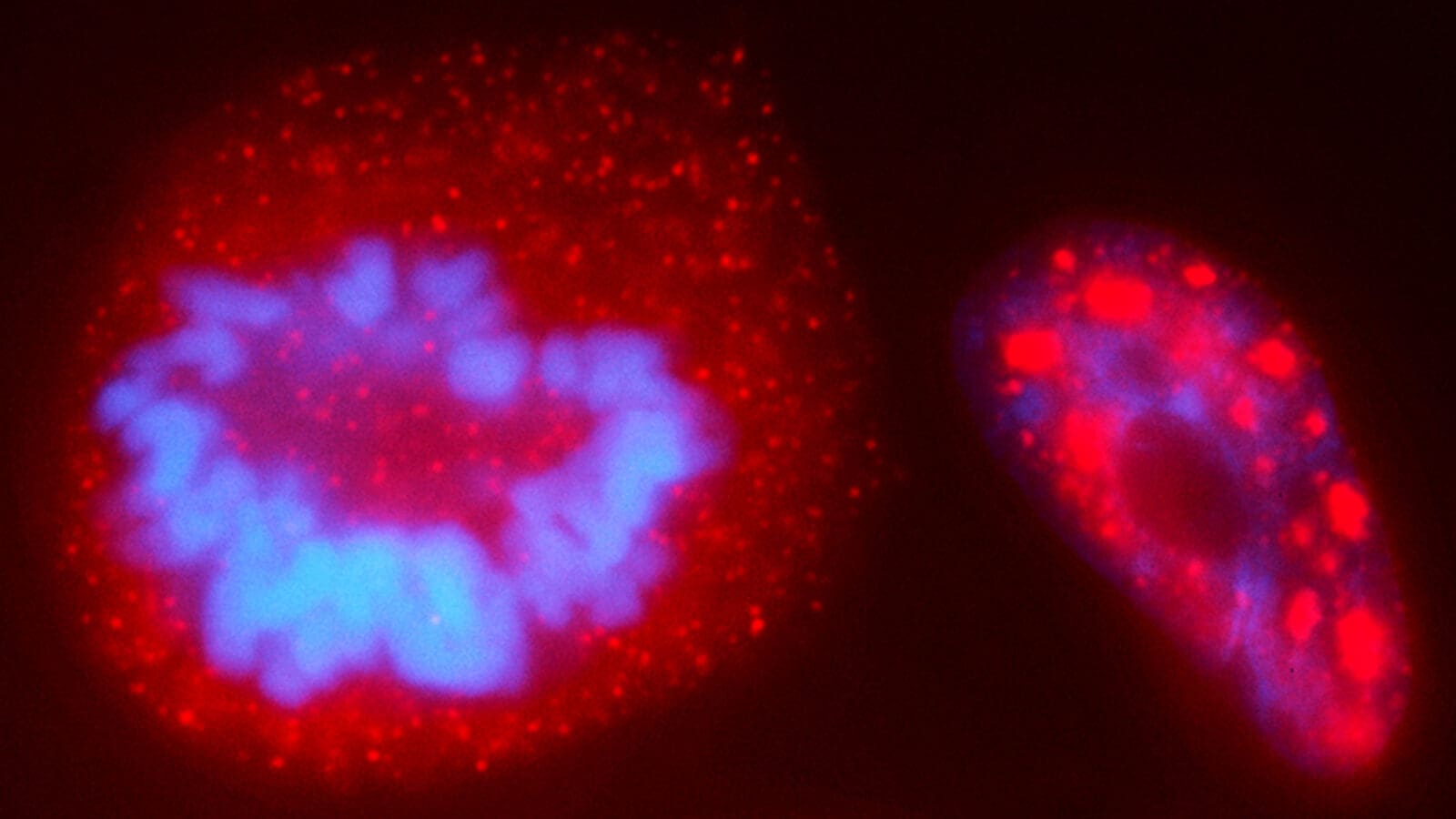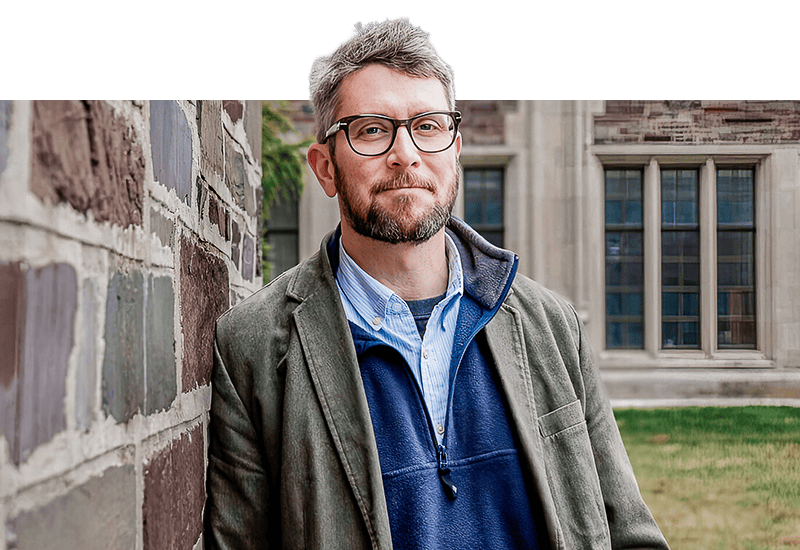
Simulations reveal workings of droplets that underlie life’s functions
By
on
This article is from the Bioengineering: Unlocking mysteries, enabling impact issue of Equad News magazine.
Once they come together, these molecular assemblies can break down nutrients, send signals to neighboring cells, or turn on stress responses.
Jerelle Joseph seeks to uncover the rules behind the formation and evolution of these droplets, known as biomolecular condensates.
“These membraneless structures are liquid-like. They exhibit characteristics like flowing, dripping, and fusing,” and form by phase] separation — like oil droplets in water, said Joseph, who joined Princeton in January 2023 as an assistant professor of chemical and biological engineering.
“What makes them very exciting,” both to study and potentially to engineer, said Joseph, “is that they have vast functions and implications for health and disease.”
Joseph’s team uses computer simulations to examine the formation of biomolecular condensates — droplets that contain hundreds of protein molecules, and sometimes DNA or RNA, and play roles in regulating growth, metabolism, and more.
Researchers’ understanding of biomolecular condensates has come a long way since Princeton professor Clifford Brangwynne and others first described the emergence of these cellular compartments nearly 15 years ago. Still, many questions remain about the conditions that drive condensates to form, and how they change over time.
“If we can understand how condensates form and are regulated, we can engineer them,” said Joseph. “Essentially, we want to reverse-engineer condensates to find out how they come about. And also, forward-engineer them to create new functionalities within cells or to prevent unwanted functions,” such as cancer or neurodegenerative diseases. Joseph is also excited by the possibility of engineering plant metabolism for sustainable food production.
But before these applications can come to fruition, Joseph and her team must develop computational models that are accurate enough to faithfully represent organization within living cells, yet efficient enough to run on today’s computers.
A growing body of experimental data on how condensates form and change is crucial to grounding her team’s models, said Joseph. Her postdoctoral work at the University of Cambridge included developing simulations to predict the phase separation of proteins, achieving a new degree of accuracy.
“Now, we want to be able to describe a wider breadth of proteins as well as nucleic acids that undergo phase separation such as RNA. So, we need to be able to augment and enhance our approaches to better describe more complex systems,” she said.







